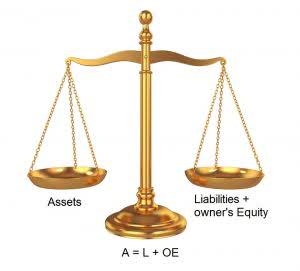Articles de la rubrique "Bookkeeping"
Margin of safety financial Wikipedia
The margin of safety calculation helps management assess the risk of producing a produce and aids in the overall decision to manufacture to product or leave the market. The margin of safety principle was popularized by famed British-born American investor Benjamin Graham (known as the father of value investing) and his followers, most notably Warren Buffett. Investors utilize both qualitative and quantitative factors, including firm management, governance, industry performance, assets and earnings, to determine a security’s intrinsic value. The market price is then used as the point of comparison to calculate the margin of safety. This also helps them decide on changes to the inventory and end production of unprofitable products. Careful budgeting and making necessary investments would invariably contribute to the betterment of the business.
Example of Investing and Margin of Safety
In business, the margin of safety is the variation between the break-even sales and the actual sales. The margin of safety may be used to inform the company’s management about an existing cushion before it becomes unprofitable. The difference between the actual sales volume and the break-even sales volume is called the margin of safety. It shows the proportion of the current sales that determine the firm’s profit.
Part 2: Your Current Nest Egg
A high margin of safety is often preferred since it indicates optimum performance and the ability of a business to cushion against market volatility. However, a low margin of safety may indicate unstable business standing and must be enhanced by increasing the sales volume. The concept is to avoid an investment scenario where there is little to gain and more to lose. The investor needs to keep cash reserves to cushion themselves against revenue falls and unexpected expenses. The management should develop several sources of income and make realistic forecasts by calculating the cost and risk before investing.
Further you can also file TDS returns, generate Form-16, use our Tax Calculator software, claim HRA, check refund status and generate rent receipts for Income Tax Filing. A greater degree of safety indicates that the company can withstand a decline in sales without losses, which highlights its stability and ability to handle market fluctuations. Our mission is to empower readers with the most factual and reliable financial information possible to help them make informed decisions for their individual needs. To show this, let’s consider the example of two firms with the same net income shown in their income statement but with a different margin of safety ratio. Investors often look for companies with a low price-to-earnings ratio, or P/E ratio, compared with similar companies to identify undervalued stocks.
- This equation measures the profitability buffer zone in units produced and allows management to evaluate the production levels needed to achieve a profit.
- But if growth is your primary goal, a slimmer margin of safety may make sense.
- The market price is then used as the point of comparison to calculate the margin of safety.
- The context of your business is important and you need to consider all the relevant elements when you’re working out the safety net for yours.
Your outgoing costs are covered by these break-even point sales, but you’re not making any profit. The margin of safety ratio reveals the difference in values between the revenue earned (profit) and the break-even point. In other words, the company makes no profit but incurs no loss simultaneously. Any point beyond the break-even point is profit and contributes to the margin of safety (MOS). The corporation needs to maintain a positive MOS to continue being profitable. This value reveals a company’s capabilities as well as its position in the market.
Benjamin Graham suggested to look at unpopular or neglected companies with low P/E and P/B ratios. One should also analyze financial statements and footnotes to understand whether companies have hidden assets (e.g., investments in other companies) that are potentially unnoticed by the market. To account for these risks, value investors often seek to buy stocks that are discounted from their intrinsic value. For example, suppose Stock ABC trades for $90, but you’ve calculated its intrinsic value at $100. As you’ll see from the formulas below, that gives you a 10% margin of safety.
Finance Strategists has an advertising relationship with some of the companies included on this website. We may earn a commission when you click on a link or make a purchase through the links on our site. All of our content is based on objective analysis, and the opinions are our own. The margin of safety ratio is an ideal index that can be used to rank firms within an industry.
You’ve got FreshBooks accounting software to automate all your invoicing, generate reports and properly connect all your business’s financial information. So you’ve got time to really evaluate and use all the information you’ve got just a click away. This means that accounting profit definition if you lose 2,000 sales of that unit, you’d break even. And it means that all of those 2,000 sales over the break-even point are profit. Shaun Conrad is a Certified Public Accountant and CPA exam expert with a passion for teaching. After almost a decade of experience in public accounting, he created MyAccountingCourse.com to help people learn accounting & finance, pass the CPA exam, and start their career.
Margin of Safety Percentage
The margin of safety is also an important figure because it new able account advantages shows how safe the business is in producing products. For example, assume a manufacturer calculates its breakeven to be 100 units. Based on its sales projections, the company anticipates selling 150 units during the next quarter. Now you’re freed from all the important, but mundane, bookkeeping jobs, you can apply your time and energy to deeper thinking. This means you can dig into your current figures and tweak your business to improve growth into the future.
What does the margin of safety tell you about a company?
£20,000 is a comfortable margin of safety for Company 1, but is nowhere near enough of a buffer from loss for Company 2. Company 1 has a selling price per unit of £200 and Company 2’s is £10,000. For example, the same level of safety margin won’t necessarily be as effective for two different companies.
It can help the business make crucial decisions on budgeting and investments. They also help in the optimized allocation of resources and cut wasteful costs. The growth at a reasonable price investment method applies a more balanced investment approach. The investor picks companies with positive growth trends and those trading below intrinsic fair value.
The investor needs to have at least a 10% margin of safety before trading with the GARP approach. In budgeting, the margin of safety is the total change between the sales output and the estimated sales decline before the company becomes redundant. It alerts the management against the risk of a loss that is about to happen. A lower margin of safety may force the company to cut budgeted expenditure. Generally, a high margin of safety assures protection from sales variations. For example, if he were to determine that the intrinsic value of XYZ’s stock is $162, which is well below its share price of $192, he might apply a discount of 20% for a target purchase price of $130.
Managers can utilize the margin of safety to know how much sales can decrease before the company or a project becomes unprofitable. In accounting, margin of safety has a divergent meaning, but the concept is similar in that it leaves room to be wrong. Margin of safety in accounting is the difference between a company’s projected sales and its break-even point, which is the level of sales it needs to achieve not to lose money.
Catégorie: Bookkeeping | Tags:
Definition, Explanation and Examples
The balance sheet is also known as the statement of financial position and it reflects the accounting equation. The balance sheet reports a company’s assets, liabilities, and owner’s (or stockholders’) equity at a specific point in time. Like the accounting equation, it shows that a company’s total amount of assets equals the total amount of liabilities plus owner’s (or stockholders’) equity.
The offers that appear on this site are from companies that compensate us. But this compensation does not influence the information we publish, or the reviews that you see on this site. We do not include the universe of companies or financial offers that may be available to you. We accept payments via credit card, wire transfer, Western Union, and (when available) bank loan.
This is the value of funds that shareholders have invested in the company. When a company is first formed, shareholders will typically put in cash. For example, an investor starts a company and seeds it with $10M.
How is the Balance Sheet used in Financial Modeling?
Therefore, this compensation may impact how, where and in what order products appear within listing categories, except where prohibited by law for our mortgage, home equity and other home lending products. Other factors, such as our own proprietary website rules and whether a product is offered in your area or at your self-selected credit score range, can also impact how and where products appear on this site. While we strive to provide a wide range of offers, Bankrate does not include information about every financial or credit product or service.
With liabilities, this is obvious—you owe loans to a bank, or repayment of bonds to holders of debt. Liabilities are listed at the top of the balance sheet because, in case of bankruptcy, they are paid back first before any other funds are given out. A balance sheet is one of the primary statements used to determine the net worth of a company and get a quick overview of its financial health. The ability to read and understand a balance sheet is a crucial skill for anyone involved in business, but it’s one that many people lack. With liabilities, this is obvious – you owe loans to a bank, or repayment of bonds to holders of debt, etc. These are also listed on the top because, in case of bankruptcy, these are paid back first before any other funds are given out.
The balance sheet is just a more detailed version of the fundamental accounting equation—also known as the balance sheet formula—which includes assets, liabilities, and shareholders’ equity. In above example, we have observed the impact of twelve different transactions on accounting equation. Notice that each transaction changes the dollar value of at least one of the basic elements of equation (i.e., assets, liabilities and owner’s equity) but the equation as a whole does not lose its balance. All assets owned by a business are acquired with the funds supplied either by creditors or by owner(s).
Balance sheets are one of the primary statements used to determine the net worth of a company and get a quick overview of it’s financial health. The ability to read and understand a balance sheet is a crucial skill for anyone involved in business, but it’s one that many people lack. The income statement is a crucial financial statement that showcases the revenues, expenses, and net income of a company over a specific period. To cash flow statement explained analyze the financial health of a company, it is essential to understand its revenue performance, cost management, and profitability. Financial ratios and performance are essential tools for evaluating a company’s financial health and stability. They provide insights into various aspects of a company’s performance, such as liquidity, solvency, and profitability.
Understanding Financial Statements
If you take out a new loan, for example, that added liability reduces owners’ equity. A balance sheet provides a snapshot of a company’s financial performance at a given point in time. This financial statement is used both internally and externally to determine the so-called “book value” of the company, or its overall worth. The fundamental accounting equation, also called the balance sheet equation, is the foundation for the double-entry bookkeeping system and the cornerstone of the entire accounting science.
Solvency Ratios
HBS Online’s CORe and CLIMB programs require the completion of a brief application. The applications vary slightly, but all ask for some personal background information. If you are new to HBS Online, you will be required to set up an account before starting an application for the program of your choice.
- To learn more about the balance sheet, see our Balance Sheet Outline.
- The income statement is also referred to as the profit and loss statement, P&L, statement of income, and the statement of operations.
- Our PRO users get lifetime access to our accounting equation visual tutorial, cheat sheet, flashcards, quick test, and more.
- For example, a positive change in plant, property, and equipment is equal to capital expenditure minus depreciation expense.
Accounting equation describes that the total value of assets of a business entity is always equal to its liabilities plus owner’s equity. This equation is the foundation of modern double entry system of accounting being used by small proprietors to large multinational corporations. Other names used for this equation are balance sheet equation and fundamental or basic accounting equation. The accounting equation demonstrates that a company’s assets are financed by its liabilities and equity, and it forms the foundation of financial statements, such as the balance sheet. If a company keeps accurate records using the double-entry system, the accounting equation will always be “in balance,” meaning the left side of the equation will be equal to the right side. The balance is maintained because every business transaction affects at least two of a company’s accounts.
Accounting Equation: a Simple Explanation
The 500 year-old accounting system where every transaction is recorded into at least two accounts. A lower debt-to-equity ratio signifies that a company is less reliant on borrowed capital to finance its operations, which can be seen as a positive sign for potential investors. It is essential to consider the appropriate depreciation method for each asset to ensure accurate financial reporting. Debits and Credits are the words used to operating expenses definition reflect this double-sided nature of financial transactions.
What Is a Balance Sheet?
In summary, asset valuation and depreciation are crucial aspects of understanding a company’s financial position. Proper valuation and accounting for depreciation give a more accurate representation of a company’s assets and their worth. Both fixed and intangible assets play a critical role in the overall value of a company, and understanding their valuation methods helps ensure the accuracy of financial statements. One of the main financial statements (along with the balance sheet, the statement of cash flows, and the statement of stockholders’ equity). The income statement is also referred to as the profit and loss statement, P&L, statement of income, and the statement of operations. The income statement reports the revenues, gains, expenses, losses, net income and other totals for the period of time shown in the heading of the statement.
Catégorie: Bookkeeping | Tags:
The Accounting Treatment of Dividends

Dividends are primarily paid to investors as cash, but some companies allow the dividend payment to be reinvested as additional partial stock in the company. If Natural Gas Inc. increases dividend payments to $1.50 in the next five years, your ROI will be 15%. In other words, if you invest $10/share today, that is a fixed cost while the return from the investment (dividends) continues to grow. The four most common methods are cash dividends, stock dividends, stock splits, and property dividends. The directors decide that each investor will receive £2.00 in dividend payments per share in that financial year.

Important Dates with Regard to Dividend Payments

Dividends declared account is a temporary contra account to retained earnings. The balance in this account will be transferred to retained earnings when the company closes the year-end account. However, the principle is the same, you are just able to skip the temporary dividends payable portions of the entry. The date of record is when the business identifies the shareholders to be paid. GAAP is telling everyone that once dividends are declared, instantly the money is owed.
What Is the Dividend Yield?
- Instead of focusing on a losing company, focus on a company with a competitive advantage that can withstand the competition.
- A long term investor might be prepared to accept a lower dividend payout ratio in return for higher re-investment of profits and higher capital growth.
- One choice is to reinvest profits into the company’s growth by acquiring better equipment, marketing, and research and development.
- In many countries, qualified dividends are taxed at a lower rate compared to ordinary income, providing a tax advantage to investors.
- Conversely, growth-oriented companies might opt for a more flexible dividend policy, prioritizing reinvestment of earnings into expansion projects, research and development, or acquisitions.
Economists Merton Miller and Franco Modigliani argued that a company’s dividend policy is irrelevant and has no effect on its stock price or its cost of capital. Dividends paid by funds are different from dividends paid by companies. Funds employ the principle of net asset value (NAV), which reflects the valuation of their holdings or the price of the assets that a fund has in its portfolio. Once the decision is made, the company announces the dividend amount per share and the schedule for payment. This announcement informs shareholders about the expected dividend they will receive. Here are a few things investors need to know about Phoenix Group and its enormous dividend.
£9,000 of savings? Here’s my 3-step approach to aim for £1,794 in passive income
- If the Dow rises 15 percent, but the dollar falls 15% simultaneously, no real money has been made.
- Many countries also offer preferential tax treatment to dividends, treating them as tax-free income.
- A shareholder may be indifferent to a company’s dividend policy, especially if the dividend is used to buy more shares.
- Most investors would obviously want to be paid in cash instead of stock.
- Property Dividends – dividends paid out as shares of a subsidiary firm or actual assets such as real estate, inventory, or anything tangible.
- A stock dividend occurs when a company elects to give shareholders stock instead of cash.
- A company with a long history of dividend payments that declares a reduction or elimination of its dividend signals trouble.
This approach can be advantageous for both the company and the shareholders. For shareholders, DRIPs provide a convenient way to increase their investment without incurring brokerage fees, and they benefit from the compounding effect of reinvesting dividends. Over time, this can lead to significant growth in their holdings, especially if the company performs well. For companies, the tax implications of paying dividends can also be significant.

For example, if a company declares dividends of $10,000, the accounting treatment will be as follows. The dividend policy of a company defines the structure of its dividend payouts to shareholders. Although companies are not obliged to pay their shareholders for their investments, they still choose to do so due to various reasons mentioned above.
- Then, the company will determine which shareholders are eligible to receive the dividend by looking at their records.
- To figure out the proportion, divide the total dividend paid for the year by the total net income (70k/100k).
- Companies that adopt a residual dividend policy pay their shareholders a dividend from their remaining profits after paying for capital expenditures and working capital requirements.
- This is explained more fully in our retained earnings statement tutorial.
- The dividends account is a temporary equity account in the balance sheet.
- For instance, in the United States, qualified dividends are taxed at long-term capital gains rates, which are generally lower than ordinary income tax rates.
- Therefore, companies regard dividend policy as an important part of their relationship with their shareholders.

To understand how your dividends are taxed, you need to determine if the payment is qualifying or non-qualifying. Qualified dividends are eligible for long-term capital gain rate taxation if they meet specific https://www.facebook.com/BooksTimeInc criteria outlined by the IRS. For example, you need to hold the stock for more than 60 days before the ex-dividend date. If you don’t meet this criteria, the dividend income is considered non-qualified and taxed at ordinary income tax rates, which can reach 37%. Then, the company will determine which shareholders are eligible to receive the dividend by looking at their records.
If a company’s board of directors decides to issue an annual 5% dividend per share, and the company’s shares are worth $100, the dividend is $5. If the dividends are issued every quarter, each distribution is $1.25. A shareholder may be indifferent to a company’s dividend policy, especially if the dividend is used to buy more shares. If a dividend payout is seen as inadequate, an investor can what type of account is dividends sell shares to generate cash.
Another factor that heavily influences dividend yield is the market value. Also, reinvesting your dividends for dividend growth will also sway your dividend yield. To record the accounting for declared dividends and retained earnings, the company must debit its retained earnings. It is because dividends, as mentioned above, are a decrease in the retained earnings of QuickBooks a company. Similarly, the company must also create a liability for the amount of the declared dividend.
Catégorie: Bookkeeping | Tags:
Economic Order Quantity EOQ Formula, Factors, Calculation
Note that the number of times an order is placed will also affect the total cost, though this number can be determined from the other parameters. Ordering costs refer to all the costs incurred each time an order is placed for inventory with the company. The EOQ formula is the square root of (2 x 1,000 shirts x $2 order cost) / ($5 holding cost), or 28.3 with rounding. The ideal order size to minimize costs and meet customer demand is slightly more than 28 shirts.
The formula can help a company control the amount of cash tied up in the inventory balance. This puts business owners with no mathematical skills at a disadvantage. The efficient Economic Order Quantity (EOQ) models require detailed data to calculate several figures. To minimize holding and order costs, the furniture company should order 26 units. The Economic Order Quantity is used by manufacturing and merchandise companies. The Economic Order Quantity determines the inventory reorder point of a company.
Economic Order Quantity shows business owners if current order quantities are reasonable or not. It helps to indicate if an action should or should not be carried out. Someone on our team will connect you with a financial professional in our network holding the correct designation and expertise. Our mission is to empower readers with the most factual and reliable financial information possible to help them make informed decisions for their individual needs. Our writing and editorial staff are a team of experts holding advanced financial designations and have written for most major financial media publications. Our work has been directly cited by organizations including Entrepreneur, Business Insider, Investopedia, Forbes, CNBC, and many others.
The EOQ tells you how much of a product you should order, so you can easily use that number when manually creating purchase orders in your POS system, if it has that functionality. But there are also ways to use the EOQ with reorder points to streamline your inventory management workflow. Many, or all, of the products featured on this page are from our advertising partners who compensate us when you take certain actions on our website or click to take an action on their website.
- By arriving at an optimal number of products to order, the company can minimize the costs for the buying, delivery, and storage of items.
- EOQ ensures that a company witnesses no shortage of inventory with no additional cost.
- Economic Order Quantity helps a business time its orders for inventory to avoid low stocks and dead stocks situations.
- To minimize holding and order costs, the furniture company should order 26 units.
The EOQ meaning
The Economic Order Quantity formula only works when the holding costs, ordering costs, and annual demand is predictable. Economic Order Quantity (EOQ) is the order size that minimizes the sum of ordering and holding costs related to raw materials or merchandise inventories. Keeping costs low will inflate margins and ultimately drive more revenue for the company. To calculate the EOQ for inventory you must know the setup costs, demand rate, and holding costs.
The economic order quantity model allows companies to find the right balance between storing unused products and making new orders, allowing them to minimize inventory costs. The eoq formula is derived by solving for q, which equals total annual order cost divided by the unit production cost. It takes into account per-unit ordering costs and holding costs per year. In cases where the usage of materials or products is unpredictable, the formula becomes useless.
The model assumes that there are costs related to the ordering and holding of the products in the inventory, and the EOQ calculator helps you keep these costs to the lowest they can be. By placing a large batch order at once, you would be able to save on your setup cost. But if you order more than scottsdale accounting services you can sell, you will start to rack up holding costs.
The eoq formula must be modified in this scenario when there is a specific order cost. We must substitute « order cost » in the formula to accommodate for each specific cost. The total annual order cost divided by the unit production cost should still be a good indicator of how many units can be ordered during a year before incurring excessive costs.
What Is the Economic Order Quantity? EOQ Formula, Calculator, Example
The total holding costs depend on the size of the order placed for inventory. Economic order quantity will be higher if the company’s setup costs or product demand increases. On the other hand, it will be lower if the company’s holding costs increase. key small business lessons and trends from xerocon south 2016 Economic Order Quantity (EOQ) gives the perfect standard quantity used by a company to calculate the inventory. It also helps in minimizing the total costs of inventory such as the overall ordering costs, shortage costs, and holding costs.
How Is the Economic Order Quantity Model Used in Inventory Management?
Critics have argued that the assumptions of constant demand and fixed cost levels are a limitation of the EOQ model. Seasonal changes in demand, for instance, are known to occur for many businesses, and costs can vary over time. We can determine monthly demand for raw materials by multiplying the annual forecast by 12.
To minimize holding and order costs, DeMoon should order 49 units. To find out the annual demand, you multiply the number of products it sells per month by 12. Economic Order Quantity helps in planning how much product to keep in stock for the number of sales made. It prevents the need to spend more and the risk of running low on stocks while demand persists. Examples of ordering costs include delivery charges, telephone charges, payment processing expenses, invoice verification expenses, and others.
What is your current financial priority?
Determination of Economic Order Quantity (EOQ) does not put a delay in delivery time into consideration. Although Economic Order Quantity is efficient, it can only function in situations where demands are constant. In situations where the demand is not consistent, the Economic Order Quantity (EOQ) will provide a misleading figure. It gives the best results concerning inventory which leads to better and long-lasting patronage.
Catégorie: Bookkeeping | Tags:
Virtual Bookkeeping Services
The service’s biggest drawback is its limited services and lack of access to financial advice. Other customers wished it was possible to call someone directly rather than wait for a response or set up a meeting. If you invoke the guarantee, QuickBooks will conduct a full n evaluation of the Live bookkeeper’s work. You’ll need to provide QuickBooks with a receipt for the transaction in question, correspondence from your outside tax accountant, or a document stating the balance of the account if an account balance is in question.
- With Live Expert Full-Service Bookkeeping we pair you with a dedicated bookkeeper who will bring your books up to date and then manage your monthly books for you, so you can focus on your business.
- Connect with experts year-round for advice and guidance, with best-in-class tools to support you as your business grows.
- Activate QuickBooks Live within QuickBooks Online by clicking on Live Bookkeeping from the left navigation bar, as indicated below.
- Live Expert Assisted also doesn’t include any financial advisory services, tax advice, facilitating the filing of income or sales tax returns, creating or sending 1099s, or management of payroll.
- See how connecting with experts one-on-one gives this busy voice-over artist the confidence her books are done right and frees up time for the things she loves to do.
If the cost of QuickBooks Live is an issue for you, you might consider Wave Accounting software with the Wave Advisor service add-on as a more cost-effective alternative. Wave Accounting is one of the very few business accounting software providers on the market that’s completely free. QuickBooks Live Bookkeeping can be more cost-effective than hiring an in-house bookkeeper or outsourcing your bookkeeping to an accounting or bookkeeping firm.
There are no long-term contracts, so you can switch or cancel your service at any time without incurring fees. And, QuickBooks Live Bookkeeping comes with an “Accurate Books Guarantee” to cover any errors made by your Live Bookkeeper (some exceptions apply). When you sign up for QuickBooks Live Bookkeeping, you are connected with a QuickBooks ProAdvisor, which is a bookkeeper certified by QuickBooks.
Learn about the QuickBooks Live Bookkeeping service
With Live Expert Full-Service Bookkeeping we pair you with a dedicated bookkeeper who will bring your books up to date and then manage your monthly books for you, so you can focus on your business. As part of ongoing bookkeeping, your bookkeeper categorizes your transactions and reconciles your accounts each month. With Live Expert Full-Service Bookkeeping, your dedicated bookkeeper will work with you to get to know your business, bring your past books up to date, and manage your bookkeeping for you, start to finish.
Focus on your business
You’ll meet with your bookkeeper via one-way video chat, which can be accessed by sharing your screen. During these meetings, you’ll have the opportunity to ask questions about financial reports and request assistance with basic bookkeeping tasks. You can also reach out to the extended bookkeeping team at any time. QuickBooks Live is an assisted bookkeeping service that enables QuickBooks Online users to enlist a qualified bookkeeping professional to categorize expenses, reconcile accounts, and provide advanced reports. Upon enrollment, you’ll be assigned a dedicated bookkeeper who’ll collaborate with you virtually.
In some cases, your cleanup may take longer depending on timeliness of documentation and the complexity of your books. At the end of each month, your bookkeeper will send you PDF copies of key financial reports, including your balance sheet and P&L statement. QuickBooks Online also has many special reports that you can generate, like a balance sheet and P&L statement by class or location. Because of its versatility, it’s our best small business accounting software. QuickBooks Live Bookkeeping offers online bookkeeping services that connect small businesses with trusted, QuickBooks-certified virtual bookkeepers.
Your taxes done right with expert help
Categorizing transactions records each transaction under the right account so you have clear records of how much the business made and where the money went. Terms, conditions, pricing, special features, and service and support options subject to change without notice. Next, your bookkeeper will take on the monthly management of your books.
Best Accounting Software for Small Businesses of 2024
Pricing is based on the average of your monthly expenses over a three-month period. Live bookkeepers aren’t responsible for errors resulting from incorrect information that you provide, or if you re-open the books by overriding closure after a Live bookkeeper completes the month-end closure. If your monthly average is $50,001 or more, the monthly price for QuickBooks Live Expert Full-Service Bookkeeping is $700. If your monthly average is $10,001-50,000, the monthly price for QuickBooks Live Expert Full-Service Bookkeeping is $500.
During your first appointment, your book value of assets bookkeeper gives you a quick tour of QuickBooks Live Bookkeeping and helps you set up your chart of accounts, connect your banks, and upload your documents. Once they have all the required information, they’ll start cleanup, which include categorizing transactions and reconciling accounts. Cleanup takes about 30 days from the time they receive everything they need from you. A Live bookkeeper cannot begin cleaning up your past books until they receive the required supporting documentation, which your bookkeeper will request from you after your first meeting. Once your bookkeeper receives all the necessary documentation, they’ll typically complete your cleanup within 30 days.
Catégorie: Bookkeeping | Tags:
Finance Automation Finance Automation: What You Need to Know

The Forbes Advisor Small Business team is committed to bringing you unbiased rankings and information with full editorial independence. We use product data, strategic methodologies and expert insights to inform all of our content to guide you in making the best decisions for your business journey. Here’s how accountants and controllers use Brex to save hours a month, boost accuracy, and be stronger growth partners to the business.
Upgrade to Automation Cloud
Conta Simples Launches Corporate Expense Management Platform • – Contxto
Conta Simples Launches Corporate Expense Management Platform •.
Posted: Thu, 18 Apr 2024 07:00:00 GMT [source]
Real-time visibility and reporting provide a business with actionable insights into budget utilization, spending patterns, and compliance. This helps make more informed decisions, create cost-saving measures, and optimize resource allocation. These types of systems promote greater adherence to expense policies and reduce the likelihood of fraudulent or inappropriate spending. Read the reviews online and evaluate the level of customer support offered. Look at responsiveness, availability of tech support, and resources for user training.
Tips to Implement Automated Event Management Efficiently

Expense management software is no different, with many providers offering mobile applications that can be your point of contact for automated expense reporting. Cloud-based expense management automation tools are likely to automatically update, meaning that you won’t have to worry about whether or not you’re up to date with new technology and features. This is why you’ll need to let your employees know what the benefits of expense management automation are.
Traditional vs Automated Expense Management
Need a crash course in lead generation, or just want to brush up on basics? Check out this lesson on Trailhead, the free learning program from Salesforce. This is when you assign points based on specific actions, such as webinar attendance, whitepaper downloads, or engagement with high-value pages on your website. Now that you’ve got a better understanding of lead generation, how can you start to move people from prospect to buyer? Start with creating, sharing, and testing content that grabs your audience’s attention. Lead generation is the process of building interest in a product or service and then turning that interest into a sale.

- When existing rules don’t process a significant number of payments, receivables clerks are required to manually track and match payments to invoices.
- We believe that there will be many more specialized virtual teammates, each helping teams sprint from ideas to action at an unprecedented pace.
- There are a variety of tools available, ranging from cloud-based solutions to more complex enterprise software solutions.
- Clients will be more satisfied, and you are more likely to get repeat business.
- Check out this lesson on Trailhead, the free learning program from Salesforce.
- However, the clunky spreadsheet, hours of manual data entry, and paper receipts can be avoided.
Scanned receipts can be reviewed automatically by AI for anomalies, and subsequently tagged for errors, ranging from misclassified expense items to duplicate expenses. By identifying errors and prioritizing them in order of urgency, Workday ensures finance teams can work efficiently and precisely. Intelligently automated financial processes provide an efficient and scalable fix to these issues.
By checking expense claims against predefined criteria (like allowable categories or spending limits), the system can flag non-compliant expenses and notify approvers for review. All of this ensures adherence https://www.bookstime.com/ to organizational policies, reduces fraud, and curbs rogue spending. Manual expense filing is often time-consuming and prone to errors, leading to frustration for employees and finance teams alike.
Approval Workflows
This type of flexibility helps to improve employee satisfaction and convenience while reducing delays in expense reporting. Expense automation software leverages technology like optical character expense management automation recognition (OCR) to extract receipt data and eliminate human intervention. This works to improve the accuracy of expense reporting and reduces the risks of miscalculations or mistakes.
- By automating routine tasks, your team can redirect their focus from mundane data entry to more strategic activities.
- You must choose the solution according to your requirements and the size of your company.
- Make a point to revisit your workflows and update as needed to make your expense reporting more efficient.
- This significantly minimizes the risk of financial data being lost or misused.
- Artificial Intelligence (AI) is already a popular trend, proven to improve business expense management automation.
- These were some of the many factors you should consider when looking for automated expense management software.
- On a quarterly or monthly basis, they submit individual requests to their team manager.
See the cost savings and business benefits of using Marketing Cloud.
Catégorie: Bookkeeping | Tags:
Contact Your Local IRS Office Internal Revenue Service
During these additional office hours, TACs will offer all regular services, however for cash payments, taxpayers must have an appointment. If a taxpayer needs in-person identity verification services, they must bring two forms of identification, and one must be a current government-issued photo ID. They should also bring a copy or digital image of the tax return in question if one was filed.
- Presenting a government issued valid ID card is required to confirm identity and appointment.
- If you have low-to-moderate income look into the Earned income tax credit.
- All you need to do is to change the existing direct deposit account and make sure the names are the same as you are registered to the IRS.
- We recommend visiting our tutorials or forms section, where you will find the solution to all your questions.
Here, you can find the contact and location information for IRS office in everett. You can get details such as the exact street address, email address, and appointment phone number. This page includes contact information about the Internal Revenue Service in Everett like street address and directions, phone number, contact email, forms, appointment and other useful information. Certain taxpayers may qualify to get free tax return preparation and electronic filing help at a location near where they live. For more information, see Volunteer Income Tax Assistance and Tax Counseling for the Elderly. If you are among the second wave of people who will receive the stimulus check you must provide your direct banking account go to the IRS by using the GET PAYMENT TOOL and it will be received during the latter part of April.
This website is using a security service to protect itself from online attacks. The action you just performed triggered the security solution. There are several actions that could trigger this block including submitting a certain word or phrase, a SQL command or malformed data. To offer more time for in-person help, the IRS will open many Taxpayer Assistance Centers (TACs) nationwide on select Saturdays in February, March, April and May. Parking lot for customers and clients visiting offices in this building is located behind the building in a small parking lot. Metered parking is available nearby with 90 minutes of slot allocation for each car.
Find your local office and see what services are available. Find the status of your last return and check on your refund. This site is operated by a private company based in California. Get the latest information on IRS operations and services. It is basically a review of your information and accounts to ensure you are reporting things properly and following the tax laws.
Popular questions at Everett, 98201
If you belong to the category of adult social security retirement, survivor, and disability insurance you do not need to file for a stimulus check as you’ll automatically receive a direct bank deposit around the end of April. Check our current processing times for returns, refunds and other services. The address you will use depends on what irs office everett you are mailing and where you live. To know where to mail your personal tax return, you should visit the IRS website and go to the WHERE TO FILE page which includes all addresses by state. Let Us Help You has information on these topics and many others. Many times, taxpayers can avoid travelling to a TAC by using IRS.gov resources.
Tax Relief in Disaster Situations offers information for affected taxpayers. All public visitors are required to take appointments prior to vising, by calling the number provided above. File an accurate return and use e-file and direct deposit to avoid delays.
IRS Office Store Hours
Tax return preparation is not a service provided at any IRS TAC. « We’re inviting anyone who wants or needs some assistance to stop by, » added IRS Wage & Investment Division Commissioner and Taxpayer Experience Officer Ken Corbin. The IRS will start your payment of stimulus check beginning from April, you’ll only benefit from this first group if you are a taxpayer with a direct deposit for your bank account filed with the IRS. It helps people to file their taxes and decide all other tax issues. The IRS office in Everett accepts tax payments from individuals, international taxpayers, business and self employed, give out tax refunds, inform about tax relief provisions and other. Certain Forms, Payments and Applications
This page provides a quick guide for where to send certain forms, applications, and payments other than tax returns.
Tax return preparation options
Telephone assistors can help with many topics but see the list of topics our assistors can’t address. If you are the responsible party for a business and you want to change https://turbo-tax.org/ your address, then you will need to complete IRS form 8822-B. Official websites use .govA .gov website belongs to an official government organization in the United States.
Some other commercial parking lots are within walking distance as well. Use Direct Pay to securely pay your taxes from your checking or savings account. We recommend visiting our tutorials or forms section, where you will find the solution to all your questions.
Irstaxoffice.org is a private information website and we have nothing to do with the government. Everett Taxpayer Assistance Center is available to resolve your tax matters and clarify all your doubts. You can get help by phone or you can visit the office for in-person assistance. Visit the IRS contact page to find tools and resources that cover a variety of tax-related issues.
Certain Elections, Statements, and Other Documents
This page provides up-to-date information on filing addresses for certain elections, statements, returns and other documents. If you have low-to-moderate income look into the Earned income tax credit. I have been in that office many times and the people who have issues with the IRS staff or security guard have them because they come in and act like idiots. The IRS is committed to improving the help we provide taxpayers and expanding our services. Walk-in offices work by appointment, so please be sure to call ahead and make one before your visit. You can use the provided IRS phone number for this purpose.
The information you’ll need is your bank account number and your bank routing number. All public visitors are required to walk through multiple stages of electronic security equipment. Presenting a government issued valid ID card is required to confirm identity and appointment.
If you can’t find the answers to your tax questions on IRS.gov, we offer help in over 350 languages with the support of professional interpreters. We recommend visiting the official irs.gov website for the latest information. In order to determine where to file your return, identify the form number for which you need the information and follow the numerical or alpha-numerical links below to your specific Where to File information.
IRS tax office in Olympia
The refund status is usually updated by the IRS within hours after you submit an e-file tax return, or after 4 weeks if the tax return was mailed by paper. You can easily give your direct deposit information by using the GET MY PAYMENT tool on IRS.gov. All you need to do is to change the existing direct deposit account and make sure the names are the same as you are registered to the IRS.
If you visit the Everett IRS office, please tell us about your experience. It can be useful for others seeking help for a tax problem. We have 2 IRS Office locations with hours of operation and phone number. You are entitled to receive the 2021 Child Tax Credit as part of the American Rescue Plan Act.
Catégorie: Bookkeeping | Tags:
Accounts Payable Turnover Ratio Formula, Example, Interpretation
For instance, a retail business using automated payments can ensure timely disbursements during peak seasons, avoiding costly late fees. Automation also reduces human error, which can contribute to delays or discrepancies in payments. A steadily declining ratio may indicate growing financial difficulties or an increasing reliance on supplier credit, while a consistent or improving ratio reflects stable financial management. Monitoring these trends helps businesses spot potential issues early and take corrective action when needed. Automated software like electronic invoicing and payments can significantly speed up processing time. This reduces the time between when an invoice is received to when payment is issued, increasing accounts payable turnover.
Common Problems with Invoice Processing and How to Fix Them
- The accounts payable turnover ratio helps anticipate future cash flow needs for paying suppliers.
- Overall, a moderate ratio between 5-15 balances efficiency, stability, and working capital management for most businesses.
- Businesses with a higher ratio for AP turnover have sufficient cash flow and working capital liquidity to pay their suppliers reasonably on time.
- The accounts payable turnover ratio of a company is often driven by the credit terms of its suppliers.
Having adjusted your credit policies, you’ll be in a position to strategically define invoice payment terms for each client. It may involve optimising your internal processes, or proactively managing customer accounts. Whatever the case, the key is to identify and address potential payment issues early.
The accounts payable turnover ratio
To calculate the ratio, determine the total dollar amount of net credit purchases for the period. When you receive and use early payment discounts, you increase the AP turnover ratio and lower the average payables turnover in days. Below are five actionable best practices to help you better manage cash flow and create forecasts that are more resilient, precise, and responsive to change. This gives you a snapshot of what your company currently owes vendors for products or services received but not yet paid for.
Track AP Turnover Ratio Trends
When she’s not writing, Barbara likes to research public companies and play Pickleball, Texas Hold ‘em poker, bridge, and Mah Jongg. Below is a break down of subject weightings in the FMVA® financial analyst program. As you can see there is a heavy focus on financial modeling, finance, Excel, business valuation, budgeting/forecasting, PowerPoint presentations, accounting and business strategy. Consistent follow-up on overdue invoices is essential, but it’s more effective when combined with a positive and supportive relationship.
Competitor analysis
- The AP turnover ratio, on the other hand, calculates how many times a company pays its average accounts payable balance in a period.
- The accounts payable turnover ratio measures the rate at which a company pays back its suppliers or creditors who have extended a trade line of credit, giving them invoice payment terms.
- You also need quick access to your most important metrics without taking valuable time entering them manually into Excel from different source systems and financial statements.
The smart AP dashboards provide a comprehensive view of your AP aging and outstanding bills, offering full visibility of your payables. Comparing your ratio to industry benchmarks provides context and helps identify whether your payment practices align with industry standards. But, since the accounts payable turnover ratio measures the frequency with which the company pays off debt, a higher AP turnover ratio is better. The AP turnover ratio is unique in that businesses want to show they can pay their bills on time, but they also want to show they can use their investments wisely. Investors and lenders keep a close eye on liquidity, debt, and net burn because they want to track the company’s financial efficiency. But, if a business pays off accounts too quickly, it may not be using the opportunity to invest that credit elsewhere and make greater gains.
Both these ratios measure the speed with which a business pays off its suppliers. A high turnover ratio indicates a stronger financial condition than a low ratio. Generating a higher ratio improves both short-term liquidity and vendor relationships.
What is turnover ratio in accounting?
Track invoice status metrics — both amount and count — to keep track of the revenue coming in. Monitor expenses as a percentage of revenue to ensure you’re not overspending in any one area. And use Mosaic’s income statement dashboard to proactively monitor your AP turnover by summarizing your revenue and expenses during a certain period of time. You’ll see whether the business generates enough revenue to pay off debt in a timely manner. To improve your AP turnover ratio, it’s important to know where your current ratio falls within SaaS benchmarks.
The main feature of this is automatic payment reminders, sent before due dates to minimise missed payments. Also, this industry can be heavily effected by economic conditions, further impeding rapid turnover. The bakery has expanded its customer base by extending credit to small business owners. A very high ARTR indicates that depreciation schedule for computers your company is collecting receivables quickly, suggesting efficient credit and collection practices. Add your beginning and ending accounts receivable balances and divide by two.
Many suppliers offer discounts for early payment, such as 2% off if paid within 10 days. Analyze if the discount rate exceeds your cost of capital – if so, take the discount to reduce input costs. Automate the process of taking early payment discounts to ensure you don’t miss earning discounts. So in summary, a good AP turnover ratio demonstrates financial stability, efficient processes, and balanced working capital management. A high turnover ratio indicates that a business is paying off accounts quickly, which is often what lenders and suppliers are looking for. Your payables turnover ratio can be improved by implementing an automated AP software.
Addressing these risks early can prevent more significant problems, such as damaged supplier relationships or disruptions to production. Regular monitoring ensures that businesses remain proactive in maintaining financial stability. The accounts payable turnover ratio measures how efficiently a company manages its accounts payable.
The accounts payable turnover ratio helps anticipate future cash flow needs for paying suppliers. By combining the ratio with the ending accounts payable balance on the balance sheet, analysts can estimate total supplier payments expected in the coming months. In summary, the accounts payable turnover ratio offers insight into how well a company is managing cash flow to pay off suppliers. Tracking this ratio over time and comparing to industry standards can help assess financial health and operating performance.
Here are some frequently asked questions and answers about the AP turnover ratio. Current assets include cash and assets that can be converted to cash within 12 months. The following two sections refer to increasing or lowering the AP turnover ratio, not DPO (which is the opposite). See how forward-thinking finance teams are future-proofing their organizations through AP automation. Barbara is a financial writer for Tipalti and other successful B2B businesses, including SaaS and financial companies. She is a former CFO for fast-growing tech companies with Deloitte audit experience.
There’s no universal benchmark for an ideal AP turnover ratio, as it varies by industry and business needs. Generally, a higher ratio indicates frequent payments, which can signal strong creditworthiness and reassure suppliers when extending credit. This ratio provides insights into the rate at which a company pays off its suppliers. Accounts payable are the amounts a company owes to its suppliers or vendors for goods or services received that have not yet been paid for. Since a company’s accounts payable balances must be paid in 12 months or less, they are categorized as a current liability in the financial statements like the balance sheet. The formula can be modified to exclude cash payments to suppliers, since the numerator should include only purchases on credit from suppliers.
During the current year Bob purchased $1,000,000 worth of construction materials from his vendors. According to Bob’s balance sheet, his beginning accounts payable was $55,000 and his ending accounts payable was $958,000. The average payables is used because accounts payable can vary throughout the year.
Catégorie: Bookkeeping | Tags:
What is the Accounting Equation? Basic & Expanded Formula Explained

Similarly, the business may have unrecorded resources, such as a trade secret or a brand name that allows https://www.instagram.com/bookstime_inc it to earn extraordinary profits. Alternatively, Edelweiss may be facing business risks or pending litigation that could limit its value. Consideration should be given to these important non-financial statement valuation issues if contemplating purchasing an investment in Edelweiss stock. This observation tells us that accounting statements are important in investment and credit decisions, but they are not the sole source of information for making investment and credit decisions.

Equity and the Expanded Accounting Equation

As expected, the sum of liabilities and equity is equal to $9350, matching the total value of assets. So, as long as you account for everything correctly, the accounting equation will always balance no matter how many transactions are involved. Moreover, companies may underestimate the cost of long-term debt or overestimate the value of long-term assets.
Example: How to Calculate the Accounting Equation from Transactions
- He forms Speakers, Inc. and contributes $100,000 to the company in exchange for all of its newly issued shares.
- This lack of clarity can make it difficult for auditors or stakeholders to trust the financial data presented to them fully.
- To prepare the balance sheet and other financial statements, you have to first choose an accounting system.
- This equation holds true for all business activities and transactions.
- Liabilities are the claims of creditors (those « outside » the business).
- The dividend could be paid with cash or be a distribution of more company stock to current shareholders.
As this is not really an expense of the business, Anushka is effectively being paid amounts owed to her as the owner of the business (drawings). Therefore cash (asset) will reduce by $60 to pay the interest (expense) of $60. Required Explain how each of the above transactions impact the accounting equation and illustrate the cumulative effect that they the accounting equation is usually expressed as have.
- Ted is an entrepreneur who wants to start a company selling speakers for car stereo systems.
- They represent the debt and obligations a company owes to external parties.
- As an integral concept in modern accounting, the accounting equation serves as the basis for keeping the books balanced across a specific accounting cycle.
- In this example, we will see how this accounting equation will transform once we consider the effects of transactions from the first month of Laura’s business.
Company worth
The company owing the product or service creates the liability to the customer. For example, a company uses $400 worth of utilities in May but is not billed for the usage, or asked to pay for the usage, until June. Even though the company does not have to pay the bill until June, the company owed money for the usage that occurred in May. Therefore, the company must record the usage of electricity, as well as the liability to pay the utility bill, in May. Cash (asset) will reduce by $10 due to Anushka using the cash belonging to the business to pay for her own personal expense.
- Insurance, for example, is usually purchased for more than one month at a time (six months typically).
- It is important to have more detail in this equity category to understand the effect on financial statements from period to period.
- Liabilities are obligations to pay an amount owed to a lender (creditor) based on a past transaction.
- For starters, it doesn’t provide investors or other interested third parties with an analysis of how well the business is operating.
- For instance, underestimating depreciation could make profits look higher than they actually are, which may mislead investors.

An error in transaction analysis could result in incorrect financial statements. Eventually that debt must be repaid by performing the service, fulfilling the subscription, or providing an asset such as merchandise or cash. Some common examples of liabilities include accounts payable, notes payable, and unearned revenue. The accounts are presented in the chart of accounts in the order in which they appear on the financial statements, beginning with the balance sheet accounts and then the income statement accounts. Additional numbers starting with six and continuing might be used in large merchandising and manufacturing companies. The information in the chart of accounts is the foundation of a well-organized accounting system.

Additional Resources
- The cash (asset) of the business will increase by $5,000 as will the amount representing the investment from Anushka as the owner of the business (capital).
- However, when the owner’s equity is shifted on the left side, the equation takes on a different meaning.
- In every transaction, debit and credit must always balance out to ensure the financial statements accurately reflect the company’s financial position.
- The owner’s investments in the business typically come in the form of common stock and are called contributed capital.
- For the past 52 years, Harold Averkamp (CPA, MBA) has worked as an accounting supervisor, manager, consultant, university instructor, and innovator in teaching accounting online.
- Debits are cash flowing into the business, while credits are cash flowing out.
Although the cash has been reduced, the overall assets remain the same because it has been exchanged for equipment. The total value of the business assets is still $10,000, keeping the equation https://www.bookstime.com/ in balance. Double-entry bookkeeping is a system that records transactions and their effects into journal entries, by debiting one account and crediting another. Creditors include people or entities the business owes money to, such as employees, government agencies, banks, and more.
Catégorie: Bookkeeping | Tags:
QuickBooks Desktop, Compare QuickBooks Desktop to Online
Additionally, the desktop products are only available as annual subscriptions, making them a bigger commitment than QuickBooks Online. With four plans, robust features and a user-friendly interface, QuickBooks Online is the ideal choice for most small businesses. QuickBooks Desktop, on the other hand, is a good option for businesses that prefer desktop software, need its advanced inventory tracking and reporting tools, or are looking for an industry-specific solution. QuickBooks Online is cloud-based with monthly subscriptions, while QuickBooks Desktop is locally installed with one-time purchases. QuickBooks Online offers multi-user access and automatic updates, whereas QuickBooks Desktop allows for advanced customization and industry-specific versions.
Thanks to the cloud, you can also access QBO from the convenience of your smartphone or tablet. This means you can check in and manage your books from anywhere in the world, whether you’re relaxing on a beach in The Bahamas or enjoying a hot chocolate at a ski lodge. If your office computer is a Mac, you can still use QuickBooks Desktop on your Mac.
Best Accounting Software for Small Businesses
Most importantly, Plus will separate the cost of your ending inventory from COGS using first-in, first-out (FIFO). You’ll need to make this tedious calculation in a spreadsheet if you choose a lower-tier plan. Meanwhile, Essentials gives you access to more than 40 reports, including those you can generate in Simple Start. Its additional reports include accounts payable (A/P) and A/R aging, transaction lists by customer, expenses by vendor, uninvoiced charges, unpaid bills, and expenses by supplier summaries. You can drill down to a list of your outstanding invoices instead of only the total outstanding. QuickBooks Online is our overall best small business accounting software.
- This means it’s “harder” to use because QBO is honestly more complicated than QuickBooks Desktop.
- With QuickBooks Online you can easily link to your client’s bank accounts to automate the collection of bank transactions, statements, and receipts.
- However, it doesn’t compare with the more than 500 options offered by QuickBooks Online.
- QuickBooks Online Advanced now offers a fixed asset accounting feature that allows you to enter and track fixed assets, such as vehicles, buildings, and equipment.
- QuickBooks Desktop requires a one-time upfront payment, making it more cost-effective in the long run for users who don’t require regular upgrades.
- This feature is particularly useful if you sell and ship products out of your state.
To help narrow down the best plan for your business, answer a few short questions below. This will offer you a customized recommendation based on the responses you give. Afterward, continue reading our article for a more detailed comparison of the five QuickBooks Online plans. Small to midsize businesses that want a desktop solution or need advanced inventory and industry-specific features.
Optional QuickBooks Online add-ons
What used to be a huge bulk of QuickBooks business is no longer so—it focuses mostly on its cloud version and actively encourages users to make the switch from Desktop to Online. This may signal future abandonment of its Desktop version as more people move to the cloud. If you make the switch from Desktop to Online, you can import your data and access your original company file at any time. QuickBooks Online wins because it offers more professional-looking and customizable invoices than QuickBooks Desktop.
If you’re looking for more from your subscription—like productivity on the go, collaboration with your team, and access on multiple devices (PC, Mac, and mobile)—QuickBooks Online may work better for you. Because QBDT is a local install on your computer, you can access your file at any time. If the internet https://www.quick-bookkeeping.net/ goes out, you’re still able to view, edit, and otherwise work on your books. There’s never any requirement that you have internet connectivity after the initial download and install. When it comes to user limits, the major difference between QBDT and QBO is in how access is granted to additional users.
Receipt management
Subscription clients in QuickBooks Desktop 2023 (R1) or older versions will need to update to the latest 2023 (R3) version before their subscription expires. Similar to other cloud-based apps, QuickBooks Online allows for anytime/anywhere access to your books. The “Plus” subscription affords you certain benefits, including 24/7 support, automatic backups of your QuickBooks file, and yearly https://www.online-accounting.net/ software upgrades. However, in most cases, it’s recommended that you purchase the software-only version. While this means you’d be subject to certain service discontinuations on a rolling three-year basis, you’d be saving money on the annual subscription. Four pricing plans for QuickBooks Online are available, ranging from $30 to $200/month (with an additional $45+/month for payroll).
A notable new feature is Spreadsheet Sync, which helps you generate consolidated reports across multiple entities easily. It is an advanced feature that lets you import and export data between QuickBooks and Microsoft Excel. You can easily generate custom reports in a single spreadsheet, create complex calculations, and use Excel’s built-in tools to work on your data. Once the data is finalized in Excel, you can easily post it back to QuickBooks Online Advanced. Plus allows you to assign classes and locations to your transactions, so you can see how your business performs across divisions, locations, rep areas, or any units that are relevant to your business.
It also has barcode scanning capabilities — business owners can download the QuickBooks Desktop mobile app and use their mobile device as a scanner. QuickBooks Desktop is more traditional accounting software that you download and install on your computer, while QuickBooks Online is cloud-based accounting software you access through the internet. For the Desktop version, you pay an annual fee starting at $549.99 per year, and the cloud-based option starts at $15 per month.
I’ve also had some not-so-great experiences with QuickBooks’ support, but there are occasions when they manage to resolve things well—and that depends greatly on the assigned agent. If you’re a freelancer, stick with its Self-Employed plan, which is $15 per month 9after the three-month discount at $7.50). Features include mileage tracking, basic reporting, income and expense tracking, capture and organize receipts and estimation of quarterly taxes. Editorial content from The Ascent is separate from The Motley Fool editorial content and is created by a different analyst team. QuickBooks Desktop wins this head-to-head competition, with better reporting, industry-specific features, a better price structure, and more comprehensive features. However, if things like integration and cloud access are important to you, QuickBooks Online may be the way to go.
Each offers a detailed chart of accounts, journal entries, bank reconciliation, accounts payable, accounts receivable, and the basic reports needed to run a company. However, QuickBooks Desktop offers better reporting and supports more complex accounting. QuickBooks Desktop is preferable for companies wanting to manage their books without an internet connection. It’s also the better option for businesses requiring complex inventory accounting features. We are driven by the Fit Small Business mission to provide you with the best answers to your small business questions—allowing you to choose the right accounting solution for your needs.
The software offers comprehensive features, unique touches (such as lead management and sales orders), industry-specific versions of the software, and the potential to be more secure. Many satisfied QuickBooks Online users appreciate that they can access the program from any internet-enabled device. Some commented that it’s easy to add vendors and customers and share files with their bookkeepers—and we couldn’t agree more.
The cloud accessibility plus the user-friendly interface makes QuickBooks Online easier to use than QuickBooks Desktop. QuickBooks Online is a cloud-based software that can be accessed anywhere with an internet connection, while QuickBooks Desktop is on-premise—meaning it can only be accessed from the computer where it is installed. QuickBooks Online offers more features on the go and is a better https://www.kelleysbookkeeping.com/ overall value than QuickBooks Desktop. If you don’t need the advanced features offered by the Desktop plan, the Online version will save you money. QuickBooks Desktop is a good choice if you need specialized features such as inventory tracking or forecasting, and you don’t mind paying more for them. Clarify complexity with efficient inventory management and integrated payroll and time tracking.
Catégorie: Bookkeeping | Tags:

 Service commercial : 01 80 88 43 02
Service commercial : 01 80 88 43 02